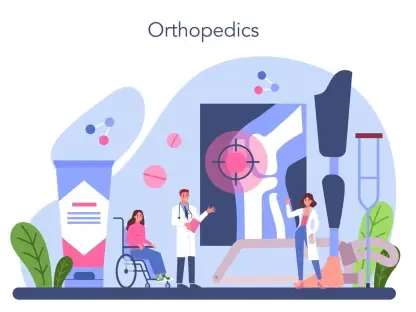Poland has emerged as a standout in the European Union’s digital health landscape, securing an impressive sixth place among member states with a remarkable 92% eHealth maturity level, surpassing the EU average of 83%. This achievement underscores a transformative shift in how healthcare services are delivered and accessed across the nation. As digital tools become integral to modernizing public health systems, Poland’s ascent reflects a broader trend of leveraging technology to enhance efficiency and patient care. This report delves into the drivers behind this success, the challenges that remain, and the future trajectory of Poland’s digital healthcare ecosystem, offering a comprehensive view of a nation redefining health service delivery through innovation.
Overview of Poland’s Digital Health Landscape
Poland’s progress in digital healthcare marks a significant milestone within the EU, positioning the country as a leader in adopting technology to revolutionize public health services. With a 92% eHealth maturity level, Poland stands well ahead of many peers, showcasing a robust framework that integrates digital solutions into everyday medical practice. This ranking highlights the nation’s commitment to enhancing accessibility and transparency, ensuring that citizens can engage with healthcare systems more effectively than ever before.
Central to this transformation are key systems like the Patient Online Account, which provides access to essential health information, and the mObywatel app, a versatile tool for managing various public services. These platforms have become cornerstones of Poland’s eHealth strategy, driven by collaborative efforts from major stakeholders such as the Ministry of Digital Affairs and the Ministry of Health. Their joint initiatives have fostered a cohesive environment where digital tools are not just implemented but are also widely adopted by the population.
The significance of these advancements lies in their ability to modernize outdated systems, reduce administrative burdens, and improve patient outcomes through streamlined processes. Poland’s success is a testament to the power of unified governance and strategic planning in digital health. This foundation sets the stage for further innovations, as the country continues to build on its already impressive standing within the European context.
Key Drivers and Trends in Poland’s eHealth Success
Emerging Tools and Innovations
Poland’s healthcare system is being reshaped by a suite of digital tools that prioritize accessibility and efficiency. The Patient Online Account stands out, granting citizens access to nine types of electronic health documents, including e-prescriptions and diagnostic reports. These resources empower patients with real-time information, fostering greater control over their health management and reducing reliance on paper-based processes.
Looking ahead, upcoming platforms such as e-Registration for appointment scheduling, e-Consultation for specialist interactions, e-Profile for early health alerts, and e-Home for remote monitoring are set to expand the scope of digital care. These innovations are particularly vital for vulnerable groups like the elderly and those with chronic conditions, offering tailored solutions that address specific needs. The integration of such tools signals a shift toward personalized healthcare delivery.
Technology’s role extends beyond mere access, enhancing transparency and operational efficiency across the board. By minimizing errors and enabling seamless communication between patients and providers, these digital advancements are creating a more responsive health system. This focus on user-centric design ensures that Poland’s eHealth initiatives remain relevant and impactful for diverse demographics.
Growth Metrics and Comparative Performance
Data from recent studies reveal Poland’s standout performance, with a 92% eHealth maturity score placing it among the top tier of EU nations. While countries like Belgium and Estonia lead with a perfect 100%, Poland significantly outpaces others, such as Ireland, which lags at a mere 25%. This comparative analysis underscores the effectiveness of Poland’s digital health strategies and highlights areas where further growth is possible.
The trajectory for Poland appears promising, with ongoing investments and policy support driving continuous improvement. Over the next few years, from now until 2027, the focus on expanding digital infrastructure could propel the nation closer to the top ranks. Key growth areas include enhancing data integration and broadening access to specialized digital services, which are critical for achieving a fully mature eHealth system.
This forward-looking perspective emphasizes Poland’s potential to not only sustain its current standing but also to set new benchmarks in digital healthcare. By learning from leading nations while addressing internal gaps, the country is well-positioned to refine its systems. Such progress could serve as an inspiration for other EU members striving to elevate their own digital health capabilities.
Challenges in Sustaining Digital Health Momentum
Despite its achievements, Poland faces notable hurdles in maintaining its digital health momentum. One pressing issue is the limited access to medical imaging, which hampers comprehensive care delivery in certain regions. This gap reveals the uneven distribution of advanced digital resources, posing a risk to the overall efficacy of the eHealth framework.
Another challenge lies in the inefficiencies of data transmission across platforms, which can delay critical health information sharing. Addressing these operational bottlenecks requires targeted technological upgrades, such as improved interoperability standards and enhanced network infrastructure. These solutions are essential to ensure that digital systems operate seamlessly and support real-time decision-making.
Overcoming these obstacles demands a commitment to continuous improvement and strategic resource allocation. By prioritizing investments in underrepresented areas and fostering innovation in data handling, Poland can solidify its high ranking. Tackling these challenges head-on will be crucial for the nation to maintain its competitive edge in the EU’s digital health arena.
Regulatory and Collaborative Framework Supporting eHealth
Poland’s eHealth success is underpinned by a strong regulatory and collaborative framework, spearheaded by the partnership between the Ministry of Digital Affairs and the Ministry of Health. Their joint efforts, exemplified by the Team for Supporting Healthcare Digitalization, have been instrumental in aligning digital initiatives with national health goals. This synergy ensures that platforms operate cohesively, enhancing user experience across the board.
Policies promoting interoperability and voluntary digital adoption play a pivotal role in this ecosystem. By allowing citizens to opt into digital services at their own pace, Poland balances innovation with accessibility. Educational campaigns, such as the Intergenerational School, further support inclusivity by equipping older generations with the skills needed to navigate digital health tools, preventing exclusion from technological advancements.
Compliance with EU standards and strategic planning have also bolstered Poland’s digital health environment. These measures not only ensure system reliability but also build public trust in eHealth solutions. The focus on governance and user engagement creates a sustainable model that other nations could adapt to their own contexts, reinforcing Poland’s position as a leader in this domain.
Future Outlook for Poland’s Digital Healthcare
The future of Poland’s digital healthcare looks bright, with initiatives funded by the National Recovery Plan poised to introduce cutting-edge solutions. Platforms like e-Home and e-Consultation are expected to address diverse needs, from remote monitoring for at-home care to facilitating specialist access. These developments aim to bridge existing gaps and cater to an increasingly varied patient base.
Emerging trends, such as enhanced remote monitoring and improved collaboration among healthcare professionals, are set to redefine service delivery. Sustained investment in digital infrastructure, alongside alignment with European digital health goals, will be key to realizing these advancements. Poland’s proactive stance in adopting such trends positions it as a potential frontrunner in the region over the coming years.
Beyond its borders, Poland’s approach offers valuable lessons for other EU nations seeking to modernize their healthcare systems. By prioritizing inclusivity and innovation, the country demonstrates how strategic planning can yield tangible results. This model could inspire broader regional progress, contributing to a more connected and efficient European health network.
Conclusion and Strategic Recommendations
Reflecting on Poland’s journey, the nation’s climb to sixth place in EU digital health transformation stands as a remarkable feat, driven by high eHealth maturity, effective governance, and a dedication to inclusivity. The strides made in integrating digital tools into healthcare delivery showcase a blueprint for balancing technology with accessibility. Challenges like data transmission inefficiencies and limited imaging access persist, yet they highlight clear areas for targeted improvement.
Looking back, the collaborative efforts between ministries and the emphasis on user-friendly platforms have laid a solid foundation for growth. Moving forward, actionable steps include ramping up investments in data efficiency to streamline information flow across systems. Prioritizing equitable access through expanded educational outreach is also vital to ensure no demographic is left behind in this digital shift.
As a final consideration, Poland needs to deepen its focus on innovative solutions like remote care technologies to meet evolving health demands. Strengthening partnerships with EU counterparts could further accelerate progress, sharing best practices for mutual benefit. These strategic moves promise to sustain Poland’s momentum, cementing its role as a pivotal player in shaping the future of digital healthcare across the continent.









